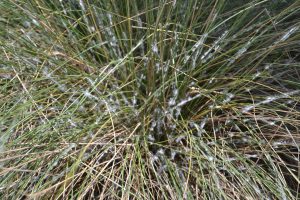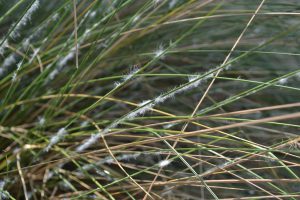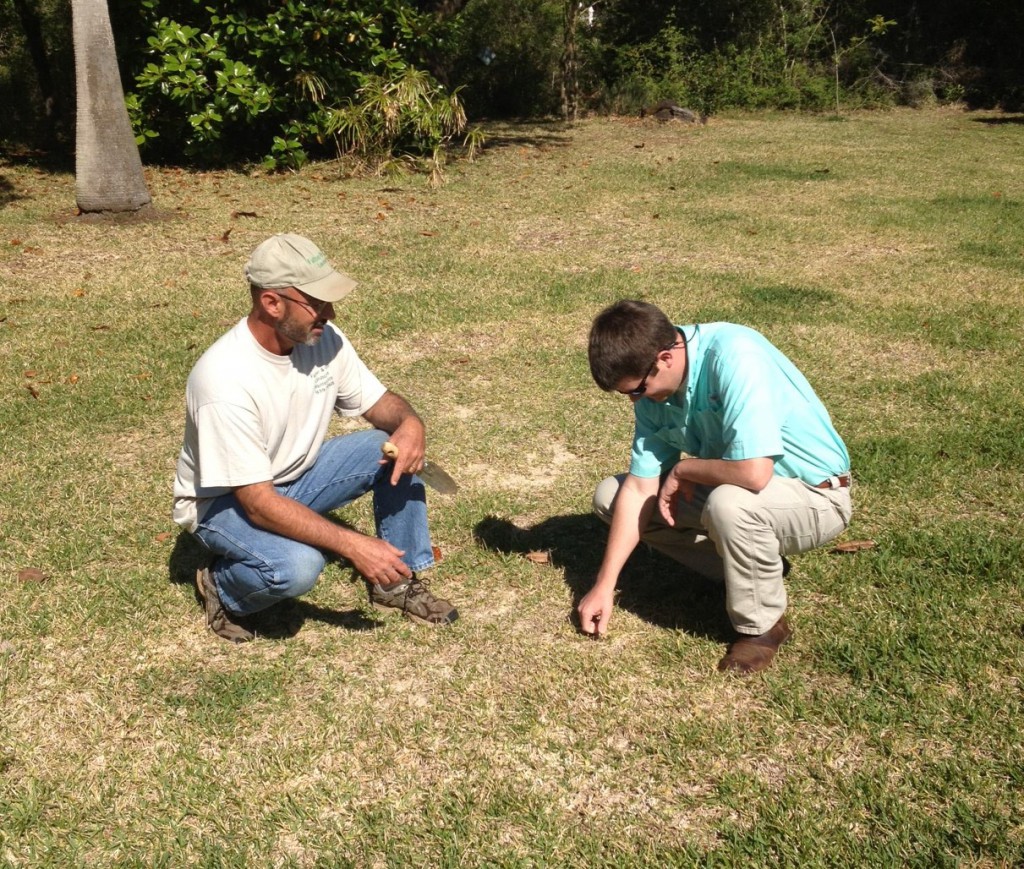by Julie McConnell | Feb 23, 2017
Please check out our Upcoming Events page to see what classes are offered in the Panhandle for Green Industry Professionals.
If you’d like to have emails about upcoming events sent directly to your inbox, sign up for our newsletter at Subscribe UF/IFAS select “Green Industries in the Panhandle” under the “Lawn & Garden” tab.
by Beth Bolles | Apr 22, 2016
Muhly grass (Muhlenbergia capillaris) is a generally pest free plant in our area, however, we are seeing the native mealybug, Stemmatomerinx acircula, on plants in various landscapes. Insects are on the leaves and are grey with white wax that may have some filaments. You may also see long ovisacs on the leaves which contain eggs and crawlers. The native fakahatchee grass may also be a host.

Muhly grass infested with mealybug. Photo: Beth Bolles

The mealybug is white with fine filaments and numerous mealybugs can be found each leaf. Photo: Beth Bolles
The common practice of right plant, right place does not always prevent the mealybug infestations on muhly grass. Specimens in both full and shade can be affected, as well as mass plantings and those spaced out. At this time, there is not a lot of information on why some plantings are heavily infested and others are not.
Since mealybugs are piercing sucking insects, there may be some browning of leaves, especially on less vigorous plants. You may have to remove and destroy plants that are heavily infested and declining. In situations where treatment is warranted you may choose a systemic insecticide or oil spray to keep plants looking more attractive. As the landscape manager, you will need to decide what is an acceptable threshold for this pest.
by Julie McConnell | Oct 27, 2015

UF/IFAS Extension working with horticulture professionals scouting turf issues. Photo Credit: Blake Thaxton
Using an Integrated Pest Management (IPM) approach to landscape management has been an integral part of the green industry for many years. The strategies help to make pest control more efficient by incorporating multiple methods and being flexible enough to make changes where needed.
One of the most critical steps in your IPM plan is monitoring and correct pest identification. If the pest is not identified correctly, then any steps taken to control that pest will be ineffective and may also mask the original problem making it harder to get a correct diagnosis.
Correct identification does not stop at naming the pest in question. More research needs to be done to choose the appropriate management methods. Some key questions to answer are:
• What are the primary hosts in this landscape?
• How can we manage the landscape to make the pest less successful?
• What is the life cycle of the pest?
• How/where does it reproduce?
• At which stage of the life cycle are we likely to get the best control?
• Are there different strategies based on life cycle stage?
Answering these questions will help you choose appropriate control methods whether cultural, mechanical, biological, or chemical. Remember to always keep good records and modify your plan as needed.
For more information visit https://edis.ifas.ufl.edu/topic_pest_management


